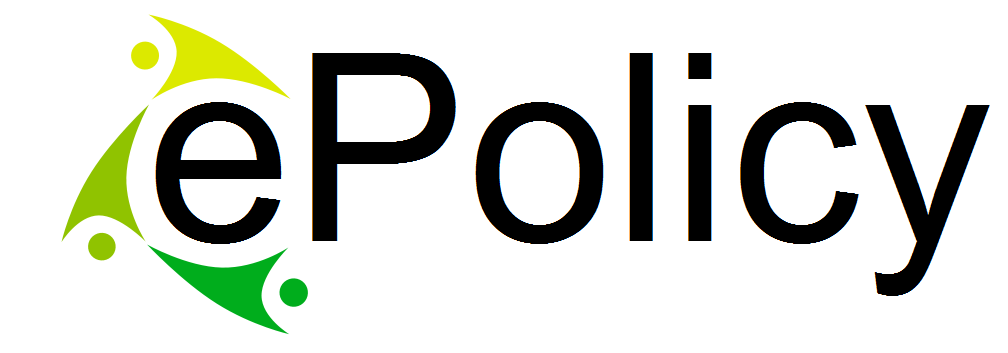
Global Optimization Module Testing Page
Welcome to the Global Optimization Module Testing Page.
This page is for testing purposes only. It provides an
easy access to the Global Optimization component described in the Deliverable D3.2 available
at the ePolicy web site.
Disclaimer: this is not the Graphical User
Interface (GUI) of the ePolicy prototype.
Indeed, the ePolicy GUI will be based on advanced visualization techniques developed within Work Package 7 (WP7).
What is the intended use of this page? To provide a method to explore some features of the Global Level Policy Reasoning Component. Hence, in this page the user can invoke the compute_plan predicate, as it is described in Section 3.3.2. We strongly recommend any interested user to read the Deliverable D3.2, before using this tool. As a reminder, the input parameters are the following:
- Objective (required): the function that the user wants to optimize. It is a required input parameter, and it can be in the form min(Term) or max(Term), where Term is a linear combination of (one or more of) the following: cost, electric, thermal, rec(X) (X between 1 and 23).
- Budget (optional): the budget for the plan, in Million of Euro.
- Electrical Outcome (optional): energy (in kTOE, exact value) that should be produced as electrical energy.
- Thermal Outcome (optional): energy (in kTOE, exact value) that should be produced as thermal energy.
-
Additional Constraints (optional): additional constraints of the type
min_max_source(Source, MinValue, MaxValue) (as explained in Section 3.3.1) or
constraints of the type cost >=electric (as explained in Section 3.3.2).
Notice that this interface does not perform any syntax check to the specified constraints. In case of syntactically wrong constraints, a simple empty page is returned.
A last word before you try the component... this page shows only a limited number of the features supported by the component. In particular, through this interface you will not be able to:
- Compute the Pareto frontier (see Section 3.3.4);
- Use the why_not predicate (see Section 3.3.5): if you post constraints that will have no solutions, you will not able to understand why (an empty page will be simply returned);
- Configure the program for other types of plans or other regions (see Section 3.3.6);
- Add new energy sources (see Section 3.3.7);
If the above features are important for you, we strongly suggest to download the Deliverable D3.2 available at the url: http://epolicy-project.eu/node/7
Inputs:
| Language: | ||
| Objective Function: |
|
e.g.: max(electric) or max(elettrica) |
| Budget: | e.g.: 6093500001.0 (leave blank if you don't want to specify it) | |
| Expected Electrical Outcome: | (leave blank if you don't want to specify it) | |
| Expected Thermal Outcome: | (leave blank if you don't want to specify it) | |
| Constraints: (one constraint per line) |
||
Results:
Energy Sources Assignments
Total Costs
Detailed Costs (for each different action)
Actions versus Receptors
Emitted Emissions and Pollutants
Notes:
- Currently, only Italian and English are supported. Please notice that the service will assume that also the input is specified within the selected language.
- The Optimization Function must always be of the form: max(F) or min(F) . F can be:
- electric
- thermal
- cost
- rec(X), indicating receptor number X
- any linear combination of the keywords above, with arithmetic operators *, +, - .
max(electric)
min(cost)
max(ric(9))
max(0.5*rec(9)-0.5*cost)
The receptors are the following:- rec(1) = Subsidence limitation
- rec(2) = Embankments stability
- rec(3) = Stability of coasts or seafloor
- rec(4) = Stability of river banks and beds
- rec(5) = Soil quality
- rec(6) = Quality of sea water
- rec(7) = Quality of inland surface waters
- rec(8) = Groundwater quality
- rec(9) = Air quality
- rec(10) = Quality of climate
- rec(11) = Wellness of terrestrial vegetation
- rec(12) = Wellness of wildlife
- rec(13) = Wellness of aquatic plants
- rec(14) = Wellness and health of mankind
- rec(15) = Quality of sensitive landscapes
- rec(16) = Cultural/historical heritage value
- rec(17) = Recreation resources accessibility
- rec(18) = Water availability
- rec(19) = Availability of agricultural fertile land
- rec(20) = Lithoid resource availability
- rec(21) = Energy availability
- rec(22) = Availability of productive resources
- rec(23) = Value of material goods
- Budget, Expected Electrical Outcome and Expected Thermal Outcome are exact values. Leave unspecified if you don't have any clue of feasible values.
You are running the service version 1.4.0